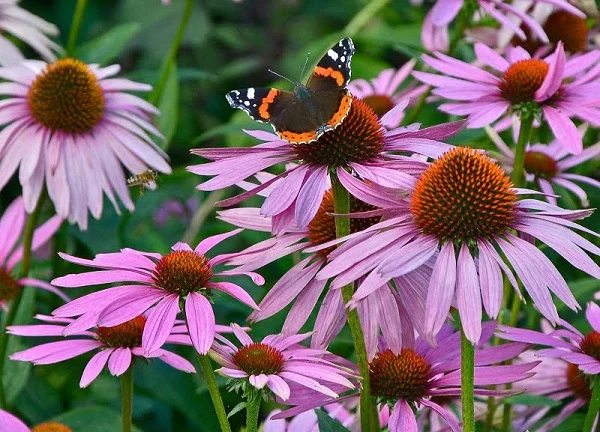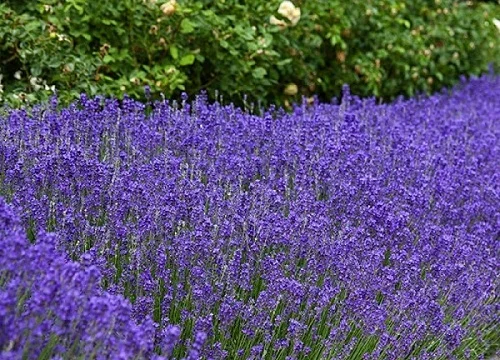3 Hardy Hibiscus Species You can Grow in Your Garden with Names and Pictures
Some links in this post may be affiliate links
Hibiscus are flowering plants in the family Malvaceae which comprises of several hundred species which are native to warm temperate, subtropical and tropical regions of the world.
Hibiscus can be categorised into two groups; Tropical Hibiscus and Hardy Hibiscus or Winter-hardy Hibiscus. Tropical Hibiscus are native to the tropical regions of Asia and Pacific Islands.

Hardy Hibiscus are native to the temperate regions and can tolerate cold winter temperatures of upto -340C where they die back in winter and come back in spring when the temperatures begin to warm up.
The hardy Hibiscus bear large flowers, upto to 8 in. wide, mainly in summer to fall. They have a shorter blooming period than the Tropical Hibiscus.
They grow best in full sun with at least 6-8 hours of sunlight daily during the growing season but require to be protected from hot afternoon sun. Though they can grow in partial shade, too much shade can result in etiolated (leggy) plants and lack of blooms.
Below are the 3 most common and popular Hardy Hibiscus Species (with care guides)
3 Popular Hardy Hibiscus Species with Names & Care Guides
1. Rose Mallow

Botanical name: Hibiscus moscheutos
Common names: Rose Mallow, Swamp Rose-mallow, Eastern Rosemallow, Marshmallow Hibiscus, Crimson-eyed Rose Mallow
Origin: southern and eastern North America
Size: 3-7 ft tall, 2-5 ft wide
USDA Zones: 4-9
Blooms: Mid-summer to early fall
Rose Mallow is a perennial hibiscus whose leaf undersides and stems are covered with tiny white hairs and bears large bell-shaped flowers with a dark-crimson center.
Crimson-eyed Rose Mallow is the hardiest of the hardy Hibiscus and is ideal for USDA Zones 4-9. In the colder regions it can be grown in containers where it can be brought inside in winter and placed in a brightly lit spot.
The flowers in Eastern Rosemallow are about 7-8 in. wide, bell-shaped with five overlapping tissue-thin, ruffled petals with white and pink coloration while the centers are maroon colored.
They have the staminal column protruding from the center while the anthers are white. The usual colors are blue, pink, red and white. They attract butterflies, dragonflies, humming birds, bees and other pollinators.
Marshmallow Hibiscus has many cultivars like Lord Baltimore, Robert Fleming, Summer Perfect Storm, Blush, Cranberry Crush among others.
Rose Mallow thrives in full sun with at least 6-8 hours of sunshine per day, average warmth, consistently moist, neutral to slightly acidic soil that is rich in organic matter with regular feeding during the growing season.
Swamp Rose-mallow can be used as a specimen landscape plant, foundation or border plant. It can also be grown as a large patio container plant.
Learn more on how to grow and care for Rose Mallow (Hibiscus moscheutos)
2. Scarlet Hibiscus

Botanical name: Hibiscus coccineus
Common names: Scarlet Hibiscus, Scarlet Rosemallow, Texas Star Hibiscus, Brilliant Hibiscus, Wild Red Mallow, Crimson Red Mallow
Origin: southerneastern North America (southeastern Virginia south to Florida then west to Louisiana)
Size: 6-8 ft tall, 2-3 ft wide
USDA Zones: 6-9
Blooms: Late summer to early fall
Scarlet Hibiscus is a herbaceous, perennial hibiscus which bears five-petalled bright scarlet flower and palmately compound leaves.
The leaves in Texas Star Hibiscus are thin, shiny, deep-green and about 5-6 in. wide. This characteristic causes it to look-like Cannabis sativa.
Though called Texas Star, it is not native to Texas but it is a common landscape plant in that area. It also has a white variety, called Hibiscus coccineus 'Alba' (White Texas Star or Lone Star Hibiscus).
Scarlet Rosemallow flowers are about 5-6 in. wide, five-petalled, bright scarlet and look-like hollyhocks. They have a staminal column protruding from the center with creamy-yellow to pale-yellow stamens. They attract butterflies, humming birds, bees and other pollinators.
Hibiscus coccineus thrives in full sun with at least 6-8 hours of sunshine per day, hot and humid conditions, consistently moist, slightly acidic to slightly alkaline soil that is rich in organic matter with monthly feeding during the growing season.
Scarlet Rosemallow is perfect for the boggy areas, ponds, along streams, water gardens and other marshy areas. It can also be grown in flowerbeds and mass plantings if the soil is kept consistently moist.
Learn more on how to grow and care for Scarlet Hibiscus (Hibiscus coccineus)
3. Rose of Sharon

Botanical name: Hibiscus syriacus
Common names: Rose of Sharon, Syrian Hibiscus, Shrub Althea, Shrubby Rose-mallow
Origin: South-central and southeast China
Size: 7-12 ft tall, 3-5 ft wide
USDA Zones: 5-9
Blooms: Summer to late fall
Rose of Sharon is a hardy deciduous shrub which bears large trumpet-shaped flowers with prominent yellow-tipped white stamens and green or yellowish-green, alternate, ovate leaves.
Shrub Althea is an upright, vase-shaped plant whose stems and branches do not branch much unless they are pruned. The stems arise about 1.5 in. above the ground which gives the plant the vase shape.
Hibiscus syriacus can tolerate air pollution, heat, humidity, poor soil and drought. It has naturalized very well in suburban areas and is considered slightly invasive in some regions.
Syrian Hibiscus flowers are five-petaled, about 3 in. diameter and are in solid colors of blue, mauve, purple,red, violet, white or bicolors with a different colored throat, depending on the cultivar. They attract butterflies, humming birds, bees and other pollinators.
Numerous cultivars of Hibiscus syriacus have been developed. Some of these include Blue Chiffon, White Chiffon, Lavender Chiffon, Purple Pillar, Diana among others.
Rose of Sharon thrives in full sun with at least 6-8 hours of sunshine per day, average warmth, consistently moist, neutral to slightly acidic soil that is rich in organic matter with regular feeding during the growing season.
Shrubby Rose-mallow can be used as a specimen landscape plant, foundation or hedge plant. It can also be grown as a large patio container plant.
Learn more on how to grow and care for Rose of Sharon (Hibiscus syriacus)


